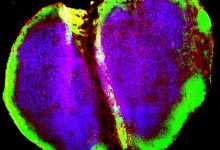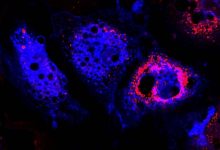
What is autoimmune disease?
An autoimmune disorder occurs when the immune system attacks healthy body tissues. The exact reason behind autoimmune disease is still unknown. One theory is that certain microorganisms or drugs may trigger the change in immune response. Some common autoimmune diseases are Addison’s disease, dermatomyositis, Graves’ disease, Rheumatoid arthritis, Type 1 diabetes etc.
What are Foxp1 proteins?
Foxp1 also known as Forkhead box protein is coded by Foxp1 gene. The diseases that are known associated with these protein are mental retardation with language impairment, lymphoma etc. This protein is necessary for proper development in brain, heart and liver in mammals. It is the member of FOX family of transcription factors. Basically it is a transcription factor and particularly transcriptional repressor. Foxp1 has three important roles, these include regulation of cardiac myocyte maturation, outflow tract separation of pulmonary artery, expression of SoX4 in cushions and myocardium. Then how is it responsible for autoimmunity?
Humans have immune system which can recognize pathogens such as bacteria, fungi, virus etc. it can eliminate them and resist the possible infectious disease. T-lymphocytes or helper T-cells can identify pathogens and the infectious cells. The helper lymphocyte contains specialized lineage called T-regulatory or Treg that instead of helping to fight infection, it actually inhibits the response of normal lymphocytes. It has been observed that mice and humans without Treg cells develop a fatal autoimmune disease caused by T-helper cell’s uncontrolled attack on the body’s own cells.
Now the scientists have found that Foxp3 protein is responsible for the development and functioning of Treg cells. They found that removing this protein gene from the genomic DNA prevents development of Treg cells. But Foxp3 protein does not work alone, it work as a part of complex proteins that help regulate the work of genes that are important for functioning of Treg cells. That set of proteins include Foxp1.
Scientists at Higher School of Economics, the institute of bioorganic chemistry of Russian academy of science and the memorial Sloan Kettering cancer center created a genetic model that helps to understand the nature of this protein. The study has been carried out under the guidance of Aleksander Rudensky and genetic model was created to explain exactly how foxp1 protein affects foxp3. They began by removing part of the Foxp1 gene in Treg from laboratory mice. The comparison of the normal cells with the cell in which foxp1 was removed has been studied. The study revealed that Foxp3 is much worse at bonding DNA in absence of Foxp1. Hence if Foxp3 is essential for Treg, then Foxp1 also has great importance because removal of that protein causes a negative effect on foxp3 mechanism. Therefore according to the research foxp3 and foxp1 are the keys to create the drugs that can selectively affect the Treg cells.
Also cancerous tumors attract Treg cells to defend themselves against body’s immune system. The ore Treg cells present in the tumor, the worst the patient’s prognosis. Hence if we could control the quantity and activity of the Treg cells then we can create effective medicines for incurable illness.






